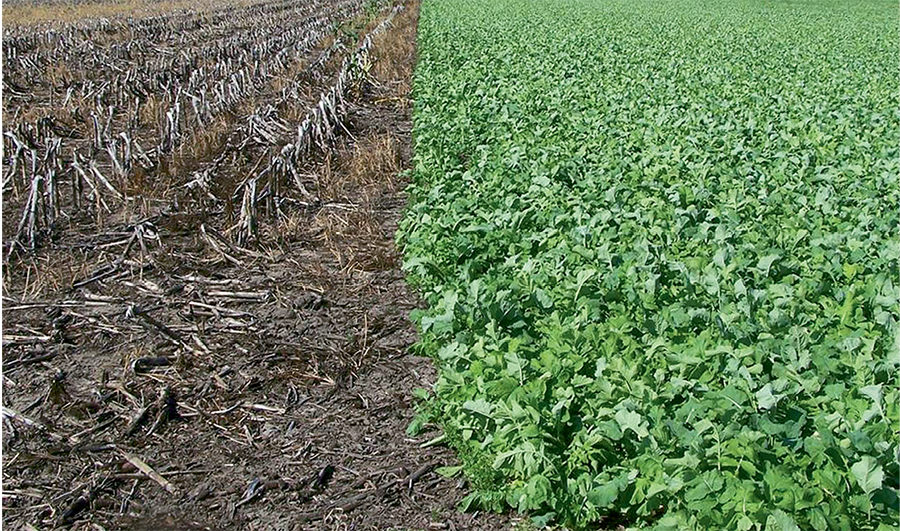No-Till Farmer
Get full access NOW to the most comprehensive, powerful and easy-to-use online resource for no-tillage practices. Just one good idea will pay for your subscription hundreds of times over.

The more Jim Millar works with cover crops, the more credit he’s willing to give them — credit for soil building, nutrient recycling, water infiltration and the nitrogen credit for the following crop.
A former NRCS soil scientist operating Precision Soil Management at Redfield, S.D., Millar has analyzed clippings of cover crop biomass to determine nitrogen content. With good growth, 100 pounds of nitrogen is a good benchmark for the cover he’s planting after wheat, he says.
With a carbon-to-nitrogen ratio similar to soybeans, he has allowed a 50% nitrogen credit for the following corn crop, but he’s considering upping that to 75% because of the impact his cover crops have had.
“Obviously, you have to use some common sense,” he says. “If I’ve only got 6 to 10 inches of growth out there, then, no, I’m not going to call that 100 pounds of nitrogen. If I’ve had a good, thick cover crop that’s gotten up to 2 feet tall, then, yes, I’d say there is 100 pounds of nitrogen in that biomass.
“In the past, we’ve been crediting half of that for the next crop, but I’m convinced that’s not enough — I’m strongly leaning toward 75%.”
Millar is so impressed with cover crop performance, he’s now advocating fertilizing the cover crop itself.
“I’ve become convinced that a good cover crop offers enough potential benefits that we may need to fertilize it specifically to maximize that benefit,” he asserts, explaining that if 50 pounds of…